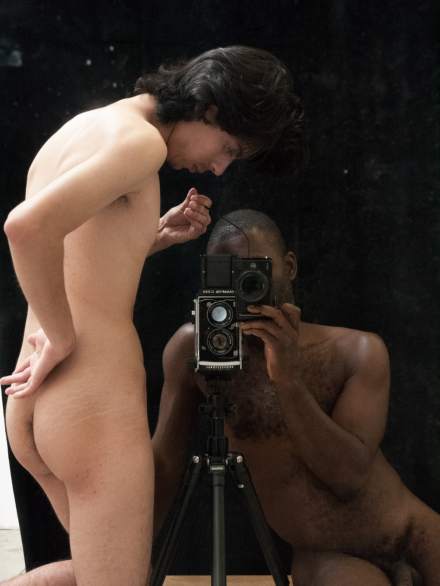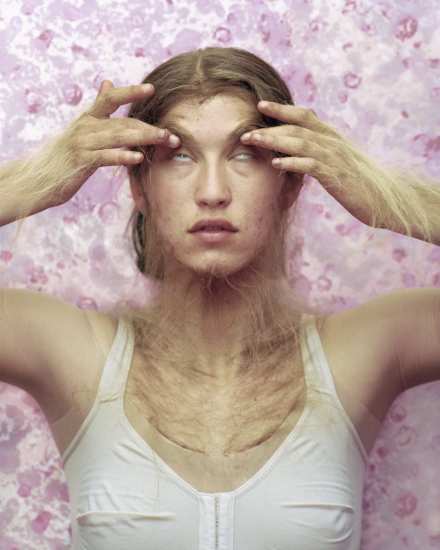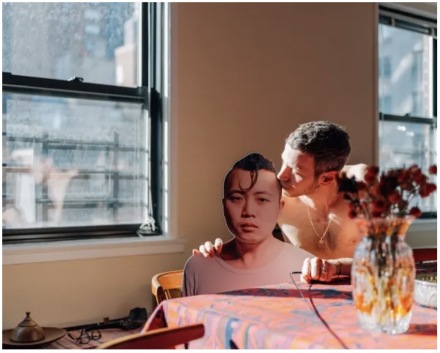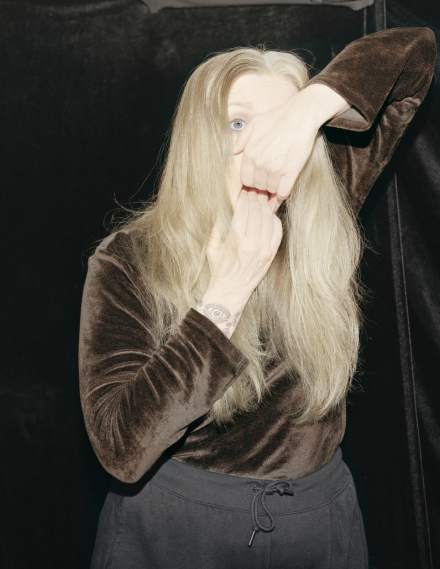
Paul Sepuya, Darkroom Mirror (2017), via Nathalie Karg
Opening a new summer group show centered around self-portraiture, Nathalie Karg’s Mirror, Mirror executes a series of explorations on perceived identity as a slippery experience, an unreliable form or concept that is constantly challenged and reified within the photographic medium. Featuring new and recent works of self-portraiture by Whitney Hubbs, Tommy Kha, Paul Mpagi Sepuya, and Ilona Szwarc, the show explores self-presentation as self-creation, a hallmark of the social media age.
Courting a lo-fi aesthetic, Hubbs’ recent self-portraits are awash with bright frontal lighting, allowing the artist to simultaneously perform a kind of vanishing act, all while demanding our attention as she hides in plain sight. In works like Skull, her constructions use the body as a site where its affectation and embellishment serves to obliterate the self from easy view, her hands managing to serve as mask and disfiguring force while emphasizing her face’s most distinct characteristics. By contrast, Kha draws on tableaux that merge self-portraiture and still life, mapping the paradoxical nature of diasporic identity, and creating intimate images that evoke the artifice of assimilation. Inserting cardboard cut-outs and printed masks of himself into the landscapes and domiciles of his past and present, he yokes together belonging and alienation with an awkward grace. Is he there? Is he elsewhere? Kha exists in these spaces in the same way that these spaces exist within the gallery, as a two-dimensional stand-in where depth and perception are literally flattened.

lona Szwarc, The woman who presents herself to the spectator as a “picture” forever arranged (2019), via Nathalie Karg
In Sepya’s erotic photographs, the presence of cameras, mirrors, cell phones, and the darkroom itself feature prominently, creating worlds that merge sensuous explorations of the body with a sort of clinical abstraction. The resulting images, wherein the artist’s own naked body is often literally entangled with that of his subject, suggest a conflation of self with other. In Szwarc’s works, otherworldly images are used as a tool to escape the treachery of female embodiment by more surrealist means, employing surrogate look-a-likes who she transforms into beast-like characters and refracts through shape-shifting mirrors. Her subjects connote a state of reverse transformation, showing us a self that exists between the realm of human and beast, civility and abandon.

Tommy Kha, Constellations (XI), Upper East Side (2019), via Nathalie Karg

Whitney Hubbs, Skull (2021), via Nathalie Karg
Throughout the show, the artists’ work allows bodies to come in and out of focus, merging with surroundings or jumping out from them. In a post-pandemic world, where we seek a new experience of the world beyond ourselves and our intimate confines, the show offers a nuanced series of ways to step back outside.
The show closes August 27th.
– D. Creahan
Read more:
Nathalie Karg: Mirror, Mirror [Exhibition Site]



